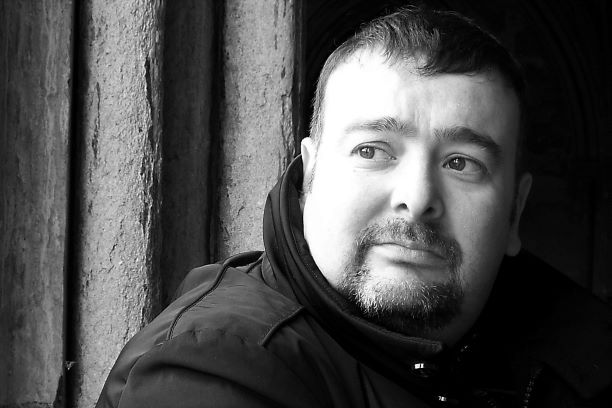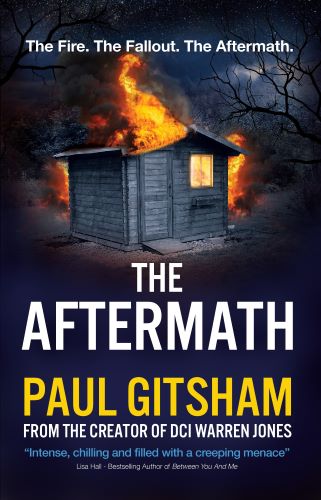Writing Backwards
A couple of weeks ago, I wrote an important interview scene for my current work in progress.
It came in at about 2,500 words. I was very pleased with it. There were key revelations that moved the story forwards. The dialogue between the interviewee and their interrogators flowed nicely. The suspect was emotional and, under pressure, finally revealed the truth that the police needed.
In the final book, the entire scene takes up little more than a paragraph, and is reported second-hand.
Now I know what you are thinking: we’ve all been there. The wordcount for the book has exploded out of control; tough decisions need to be made and this scene had to be cut. All that is true. But here’s the thing.
I started writing that scene, knowing that it was never going to be more than a paragraph.
On the face of it, that seems mad! The original scene took me over a day to write. I can knock out a paragraph in less than an hour. So why would I waste a whole day writing something that I knew would never make the final cut?
Because that resulting paragraph is better than anything I could have written if I’d set out to write a scene of two hundred words or fewer from scratch.
I am not a big planner. When I set out to write an interview scene, I start with just a few lines to guide me. Essentially, what information needs to be imparted during the interrogation and a rough idea of whether the suspect is going to be honest from the outset or if the truth will need to be prised out of them. Will they have a solicitor present? Will they heed their solicitor’s advice to no comment or will they be unable to keep their mouth shut?
From then on, I write the scene as it comes to me and just allow the story to lead me where it wants to. In the process of writing it, unexpected revelations are made and new ideas come to mind that I jot down for later in the book.
Perhaps the characters say something that I hadn’t considered? On more than one occasion, I’ve gone back and made changes to earlier scenes, because if the suspect claims that X happened, then I need to change the crime scene to match that admission. Perhaps they swear that they were at home that night? In which case, I need my investigators to verify their alibi – do I need to have someone speak to their neighbours or get DS Mags Richardson to check CCTV or Automatic Number Plate Recognition cameras to determine if their car was parked outside their house all night? Can Rachel Pymm look at the movements of their mobile phone to see if it was somewhere it shouldn’t be?
It is the actual process of writing the scene that is more important than what eventually finds its way onto the page.
I refer to this as writing backwards: taking a lengthy scene and watching as the number of words actually shrinks, rather than expands (our usual goal!). It is a process of distillation.
Many authors do similar things. I know writers who will spend a day making a LEGO model of a key location. Doubtless this is a fun procrastination activity, but more importantly it allows them to visualise exactly where the event took place, so that when they describe what happens there in the story, they can see it clearly in their mind’s eye. They place LEGO figurines around the model and then move them as the scene progresses. At any given point in time, they know who was doing what and where. Then it becomes akin to reportage, rather than having to make it up from scratch. The writer is omniscient and they simply choose what to share with the reader. It also allows them to avoid simple errors such as having a character in two places at the same time, and perhaps reminds them that character Y is still present and the reader will want to know what they were doing whilst the drama unfolded.
It came in at about 2,500 words. I was very pleased with it. There were key revelations that moved the story forwards. The dialogue between the interviewee and their interrogators flowed nicely. The suspect was emotional and, under pressure, finally revealed the truth that the police needed.
In the final book, the entire scene takes up little more than a paragraph, and is reported second-hand.
Now I know what you are thinking: we’ve all been there. The wordcount for the book has exploded out of control; tough decisions need to be made and this scene had to be cut. All that is true. But here’s the thing.
I started writing that scene, knowing that it was never going to be more than a paragraph.
On the face of it, that seems mad! The original scene took me over a day to write. I can knock out a paragraph in less than an hour. So why would I waste a whole day writing something that I knew would never make the final cut?
Because that resulting paragraph is better than anything I could have written if I’d set out to write a scene of two hundred words or fewer from scratch.
I am not a big planner. When I set out to write an interview scene, I start with just a few lines to guide me. Essentially, what information needs to be imparted during the interrogation and a rough idea of whether the suspect is going to be honest from the outset or if the truth will need to be prised out of them. Will they have a solicitor present? Will they heed their solicitor’s advice to no comment or will they be unable to keep their mouth shut?
From then on, I write the scene as it comes to me and just allow the story to lead me where it wants to. In the process of writing it, unexpected revelations are made and new ideas come to mind that I jot down for later in the book.
Perhaps the characters say something that I hadn’t considered? On more than one occasion, I’ve gone back and made changes to earlier scenes, because if the suspect claims that X happened, then I need to change the crime scene to match that admission. Perhaps they swear that they were at home that night? In which case, I need my investigators to verify their alibi – do I need to have someone speak to their neighbours or get DS Mags Richardson to check CCTV or Automatic Number Plate Recognition cameras to determine if their car was parked outside their house all night? Can Rachel Pymm look at the movements of their mobile phone to see if it was somewhere it shouldn’t be?
It is the actual process of writing the scene that is more important than what eventually finds its way onto the page.
I refer to this as writing backwards: taking a lengthy scene and watching as the number of words actually shrinks, rather than expands (our usual goal!). It is a process of distillation.
Many authors do similar things. I know writers who will spend a day making a LEGO model of a key location. Doubtless this is a fun procrastination activity, but more importantly it allows them to visualise exactly where the event took place, so that when they describe what happens there in the story, they can see it clearly in their mind’s eye. They place LEGO figurines around the model and then move them as the scene progresses. At any given point in time, they know who was doing what and where. Then it becomes akin to reportage, rather than having to make it up from scratch. The writer is omniscient and they simply choose what to share with the reader. It also allows them to avoid simple errors such as having a character in two places at the same time, and perhaps reminds them that character Y is still present and the reader will want to know what they were doing whilst the drama unfolded.
Do you “Write Backwards”? Or do you spend large amounts of time doing things that, on the surface seem to be a waste of time, but are actually crucial to your writing process?
As always, feel free to comment here or on social media.
Until next time, best wishes.
Paul




















